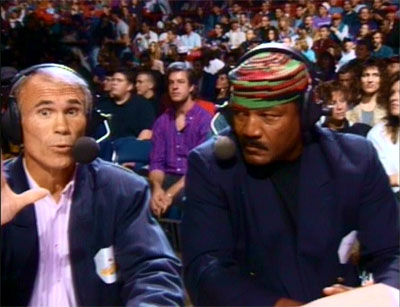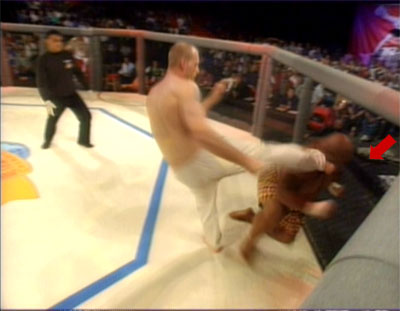Sci-Fi Adventure Series “The Warlord” Returns!
By Sean Fahey
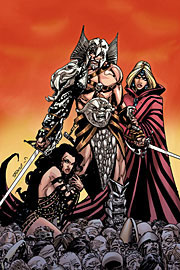 Mike Grell was a popular guy around the Fahey household during the early eighties. John Sable: Freelance was probably the first (no pun intended) “independent” comic I ever read – way before people even cared about those things – and Green Arrow: The Longbow Hunters (of course along with The Dark Knight Returns) was the first time I remember taking superheroes seriously. And the there was… The Warlord. During those formative years, few comics could match the sheer sci-fi high adventure awesomeness of The Warlord. Nobody back then did sword and sorcery comic books like Mike Grell. Nobody. That dark day in 1986 when the series was cancelled is second only to the Irish Potato Famine as the great tragedies mourned by Clan Fahey. Well, February 2006 brings cause for celebration, as The Warlord returns to its rightful place on the comic stands as a new ongoing series courtesy of writer Bruce Jones and artist Bart Sears – and suffice it say that fans, both old and new, will dig this comic book.
Mike Grell was a popular guy around the Fahey household during the early eighties. John Sable: Freelance was probably the first (no pun intended) “independent” comic I ever read – way before people even cared about those things – and Green Arrow: The Longbow Hunters (of course along with The Dark Knight Returns) was the first time I remember taking superheroes seriously. And the there was… The Warlord. During those formative years, few comics could match the sheer sci-fi high adventure awesomeness of The Warlord. Nobody back then did sword and sorcery comic books like Mike Grell. Nobody. That dark day in 1986 when the series was cancelled is second only to the Irish Potato Famine as the great tragedies mourned by Clan Fahey. Well, February 2006 brings cause for celebration, as The Warlord returns to its rightful place on the comic stands as a new ongoing series courtesy of writer Bruce Jones and artist Bart Sears – and suffice it say that fans, both old and new, will dig this comic book.
Like any first issue, Warlord # 1 is an introduction. But Bruce Jones manages to avoid the boring linear origin approach typical of so many first issues by crafting an interesting dual story structure to open the series up with. In framing the first issue this way, Jones very deftly suggests that the convergence of the two storylines is anything but accidental. One track follows daring test pilot Travis Morgan, pushing an experimental new aircraft to its limits. The other track involves the political maneuverings of several power players on the Planet Skartaris, where the militaristic Kolosians threaten the kingdom of Shamballah. Brovis, the King of Kolosis, offers peace (when he’s not busy slaughtering those who oppose him in gladiatorial combat) in return for the hand of Princess Tara. But Tara is working behind the scenes to find a warrior strong enough to lead her people to freedom. Ultimately the two stories intersect when Travis (accidentally?) passes through a dimensional barrier and ends up on this strange and fantastic new world…as an answer to Tara’s prayers?
I’ll put it to you straight. We need more comic books like this. We need the kind of diversity that series like Jonah Hex, Conan and The Warlord bring to mainstream comics. And there’s just nothing like a good science-fiction fantasy yarn, which Jones and Sears look to have the makings of here. Much in the spirit of Edgar Rice Burroughs and Robert E. Howard, The Warlord has a real (albeit more contemporary) pulp feel to it – from the characters, to the dialogue, to the settings to the story itself. Jones and Sears work hand in hand to create a rich and vibrant fantasy world populated by stoic and brutal barbarians, voluptuous and cunning women and terrible and bizarre creatures. And the story is big, as in planet-wide conflict big. Put simply, The Warlord is an issue of “Amazing Stories” with a modern touch. An exciting and imaginative read – The Warlord is back!
FOUR OUT OF FIVE VIKINGS

DC lets Scott Hampton roll Solo
By Graig Kent
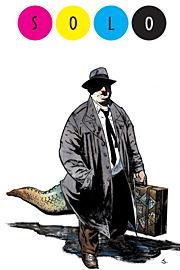 I really dig DC’s Solo series, the bi-monthly anthology that thrusts the spotlight on a single creator allowing them to do with their 48 pages (advert-free) as they please. Most of the artists that have been allowed the Solo treatment have opted for an anthology-style, playing with characters within the DC Universe, creating their own tales, or telling autobiographical stories. While I havn’t picked up every issue of the series (having little interest in a couple of the creators highlighted so far), as of this issue I’m five for nine, and of those five I’ve enjoyed each and every one of them.
I really dig DC’s Solo series, the bi-monthly anthology that thrusts the spotlight on a single creator allowing them to do with their 48 pages (advert-free) as they please. Most of the artists that have been allowed the Solo treatment have opted for an anthology-style, playing with characters within the DC Universe, creating their own tales, or telling autobiographical stories. While I havn’t picked up every issue of the series (having little interest in a couple of the creators highlighted so far), as of this issue I’m five for nine, and of those five I’ve enjoyed each and every one of them.
But for me, this Scott Hampton issue is something else. I don’t owe any particular allegiance to Hampton, and I can’t say that I’ve ever been a devoted follower, but every time I encounter his work, I’m stunned, and, needless to say, infinitely impressed. Solo #9 is no exception. A quintet of tales show off Hampton’s dexterity and array of styles: watercolor, pen and ink, and ink washes, or a mix of the three. In this issue Hampton also gives us an insiders look at his creation process – from roughs to pencils to inks to paint – which is brief but fascinating for anyone interested in the creation process.
Not to be outdone, his writing here is top-notch as well. Sure, a collection of stories in 48 pages doesn’t allow for much expansion but sometimes you just don’t need it. The first story, “Batman: 1947” (co-written with John Hitchcock), is a cute tale about a man in the 1940’s who dresses up as Batman from the serialized films for their premiere, only to be thrust into a situation where he must act the role for real. Hampton follows this up by illustrating an intriguing broken-English love letter he found on a passenger train years ago. The third tale, “Another Success Story” is a darkly-humorous work of fiction set inside the comic book industry, in which an ostracized comic book creator hires a couple of no-talent boobs to be his facemen in order to keep working, until it all goes sour. The fourth tale is a quick one, full of spacemen, monsters, and a couple jabs at ol’ “President Shrub”, mainly included as a reference point for his “creation tour”. Last, but definitely not least (in fact the highlight of the issue) is “The Road To Samarra”, which is a Twilight Zone-esque tale which is the kind of thrilling, cold-shiver, creepy suspense-horror that Hampton absolutely excels at telling, and this one is a whopper.
I’ve only had this copy of Solo for five days, and already it’s dog-eared. I’ve thumbed through it a half-dozen times and I’ve read a couple of the stories two and three times over. While it’s definitely not high-brow, it’s certainly fine-art with a layman sensibility. Harkening back to old Creepy stories and taking a nod artistically from Wally Wood is only part of this issue’s charm, Hampton delivers sheer reading pleasure through and through.
FOUR AND A HALF OUT OF FIVE VIKINGS

Captain America Still Deserves the A
By Christ Breault
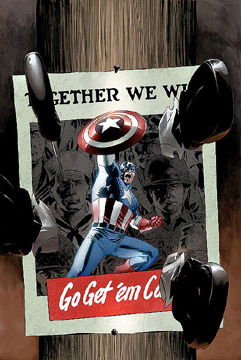 Everybody likes Brubaker’s Captain America. In essentially one story (issues 1-14, I don’t care how they’re officially broken up) he turned the character’s life upside down and shook him till everything fell out. Besides the well-publicized, smoothly handled twists – the death of the Red Skull, the reintroduction of Bucky – the book moved Cap to a harsher, richer, and more personal space that no previous incarnation of the title had attempted to find. I mostly remember Cap’s solo title as the home of stories about him going to the Savage Land and punching that giant head that ran AIM. This Captain America, though, is a guy who can get tired and beat up and confused, whose corny wholesomeness (which is played down a little) feels less false once placed within Brubaker’s pessimistic vision.
Everybody likes Brubaker’s Captain America. In essentially one story (issues 1-14, I don’t care how they’re officially broken up) he turned the character’s life upside down and shook him till everything fell out. Besides the well-publicized, smoothly handled twists – the death of the Red Skull, the reintroduction of Bucky – the book moved Cap to a harsher, richer, and more personal space that no previous incarnation of the title had attempted to find. I mostly remember Cap’s solo title as the home of stories about him going to the Savage Land and punching that giant head that ran AIM. This Captain America, though, is a guy who can get tired and beat up and confused, whose corny wholesomeness (which is played down a little) feels less false once placed within Brubaker’s pessimistic vision.
And no issue of the title is darker than this one, which drops the Winter Soldier stuff (not really resolved in issue 14) to pick up another thread – Crossbones, who had previously broken the Red Skull’s daughter out of a SHIELD facility. The book’s ensemble cast is one of its strongest assets, and this story drops Cap almost completely to focus on Crossbones’ attempts to “deprogram” the reformed Synthia, who remembers nothing of her criminal past. While essentially an exposition issue, loaded with flashbacks and backstory, it’s one of the more compelling prologues/interludes to show up in a comic recently. As one of the most brutal, petty villains in Cap’s world, Crossbones is also one of its most interesting characters, and his persistence and twisted sense of loyalty are explored capably here.
Perkins’s art drains all the detail and pomp out of the superhero world, leaving a claustrophobic, muted environment that perfectly complements the story being told here. The whole book feels spare and fascinating, even if its ending feels like a foregone conclusion (why would the story be included at all if it didn’t lead to the rebirth of another villain?) Brubaker continues introducing new elements to his story, and hasn’t eliminated many of the old ones; this is all about the continuing influence of the Skull, a guy who died in the first issue. It’s tough to judge how, or if, Brubaker can bring all his disparate plot elements together. For now, the book’s still great.
FOUR OUT OF FIVE VIKINGS

Still Lots of Life in Usagi Yojimbo
By Elgin Carver
 There are, unfortunately, a comparatively few number of comics originated by, and completed by one and the same person. I say this because with almost any creative project, the originator understands the intent, the clarity requisite for that undefinable something that grabs you and insists on being enjoyed. What I believe to be the longest running book in this category today is Usagi Yojimbo, a "funny animal" comic set in feudal Japan, whose title character is a rabbit ronin (a masterless samurai). While one may be able to dredge up a few titles from the dim past that approached their subject matter in a serious manner, and used cartoon animals as the images, generally this genre that fallen by the wayside, and other than Maus no other title leaps to mind from the recent past.
There are, unfortunately, a comparatively few number of comics originated by, and completed by one and the same person. I say this because with almost any creative project, the originator understands the intent, the clarity requisite for that undefinable something that grabs you and insists on being enjoyed. What I believe to be the longest running book in this category today is Usagi Yojimbo, a "funny animal" comic set in feudal Japan, whose title character is a rabbit ronin (a masterless samurai). While one may be able to dredge up a few titles from the dim past that approached their subject matter in a serious manner, and used cartoon animals as the images, generally this genre that fallen by the wayside, and other than Maus no other title leaps to mind from the recent past.
This book has appeared on a reliable schedule for a number of years, also rare for creator written and drawn books, especially since the quality seldom wavers in its consistently solid stories. These stories are often multi-issue arcs, with quite mature themes. Now I am not speaking of sexual activity, although I am sure a rabbit will follow his nature, and I do not mean blood and guts, although characters are killed on at least as regular a schedule as in the Punisher. I refer to that difficult to define quality that differentiates The Maltese Falcon from, say, XXX. Here, clearly, Humphrey Bogart would fit the long ears better than Vin Diesel.
I wouldn’t recommend this issue as an introduction, since this is the second issue in the present story arc, although one could certainly catch up on the story quickly enough. Better that you go to the back issue bin, pick out ten or so contiguous issues, and then make sure your pull list has Usagi on it. It is not a spectacular comic (I congratulate Stan Sakai and Dark Horse for keeping this comic in black and white. The Seven Samurai should never be colorized and neither should Usagi.), but it is superior in quality with few contemporary challengers for consistency, thoughtfulness, and depth.
FOUR OUT OF FIVE VIKINGS

The Amazing Spiderman Doesn’t Swing as Strong
By Elgin Carver
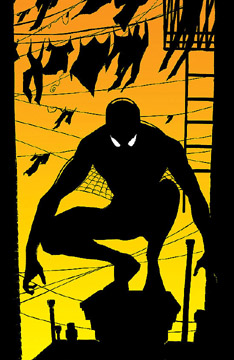 For the past 20 years or so, a kind of mania has swept through the corporate suits of comicdom from time to time, and taken hold in some of the worst possible places. The mania manifests when someone, or group of someones, feels that stories are becoming stale, or, and this may be more likely, sales are slumping. This obsession can become a positive thing and the retro look becomes a part of the mythos. The Dark Knight is the example that first springs to mind. Batman was re-energized, and echoes of those four issues can still be heard in most of today’s books. I enjoy the Ultimate titles which are taking a more modern, slightly skewed look at most of Marvel’s main characters. It’s being done in a mature and reasonable way, for what it is. More commonly, this mania interferes with both the previous history of the character and the future possibilities in a negative way, carrying the books off into plot lines that clearly would be better served by creating a new character or, preferably, forgotten altogether. Remember the Death of Superman? The Clone Saga for Spiderman?
For the past 20 years or so, a kind of mania has swept through the corporate suits of comicdom from time to time, and taken hold in some of the worst possible places. The mania manifests when someone, or group of someones, feels that stories are becoming stale, or, and this may be more likely, sales are slumping. This obsession can become a positive thing and the retro look becomes a part of the mythos. The Dark Knight is the example that first springs to mind. Batman was re-energized, and echoes of those four issues can still be heard in most of today’s books. I enjoy the Ultimate titles which are taking a more modern, slightly skewed look at most of Marvel’s main characters. It’s being done in a mature and reasonable way, for what it is. More commonly, this mania interferes with both the previous history of the character and the future possibilities in a negative way, carrying the books off into plot lines that clearly would be better served by creating a new character or, preferably, forgotten altogether. Remember the Death of Superman? The Clone Saga for Spiderman?
Spiderman is clearly off on one of these jaunts. Will it be a good trip or bad? The signs are not promising. Spider-Man #529 revolves, in what is a rather heavy handed manner, around a new costume, created by Tony Stark, that is bullet proof (for the most agile superhero on the planet), monitors his heartbeat (for a man with spider senses), and flies, sort of (for someone who now has "natural" spider shooters and can swing on the webs). Why? Here I pause to let you know that I completely spoil the issue in the following sentence, so if you must read on, be forewarned.
The whole point of creating this new costume was to make Spiderman into Iron Man’s sidekick! Why, in the name of all that is good and holy, would anyone take the most recognizable moneymaker in their stable, their business icon, and make him into the second banana for someone unknown to probably 90% of the population at large? I can only assume that either one or the other’s character’s sales are slumping in an alarming manner, or an attempt is being made to piggyback one character on the popularity of the other in anticipation of making a movie that needs a little interest push. (I will here refrain from a long diatribe on Marvel’s inability to make good movies on their own. Remember the first FF movie? The first Punisher? The first Captain America? etc. I tremble with dread anticipating what they will now create with their new production and distribution arrangements.)
This trip to me seems to be a straight and broad, one way avenue deep into the heart of darkness. For the love of God, put on the brakes and let me out.
TWO OUT OF FIVE VIKINGS

Ultimate Wolverine vs. Hulk – “Hulk Smash” Indeed, this book’s smashingly good”
By Jeb D.
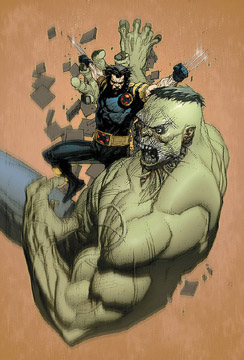 It’s ironic that one of the most “old-school” comics this week comes from a comics newbie: Lost co-creator Damon Lindelof. Working with artist Lenil Francis Yu, Lindelof has taken one of the classic encounters of the original Marvel Universe (Wolverine was first introduced as an enemy for The Hulk), spun it Ultimate, and come up with the kind of comic that reminds us how much entertainment can still be mined from these age-old characters and situations.
It’s ironic that one of the most “old-school” comics this week comes from a comics newbie: Lost co-creator Damon Lindelof. Working with artist Lenil Francis Yu, Lindelof has taken one of the classic encounters of the original Marvel Universe (Wolverine was first introduced as an enemy for The Hulk), spun it Ultimate, and come up with the kind of comic that reminds us how much entertainment can still be mined from these age-old characters and situations.
The story so far: Following his murderous rampage in the first Ultimates series, The Hulk is at large, and SHIELD chief Nick Fury has dispatched the mutant X-Man Wolverine to track him down. “Ultimate” Hulk is well-named: bigger, fiercer, and deadlier than his MU counterpart. Issue #1 ended with a startled Wolverine finding The Hulk in an unexpected place, both geographically… and mentally. And it’s no spoiler to say that we already know their first encounter doesn’t go well for young Mr. Logan.
Issue #2 takes us back to the story of how The Hulk got there. It starts with his (literally) explosive escape from his fate, and continues along a structure that echoes the old Hulk TV series (with some specific in-joke references), as we see Bruce Banner traveling the world, trying to leave The Hulk, and the betrayal by his girlfriend, behind him. At every step, though, Banner encounters people who refuse to understand someone who is different, and troubled—NOT The Hulk, though, but Bruce himself. And meeting this constant lack of humanity sets the stage for panel after gleeful panel of “Hulk Smash!” I don’t know if this is the first time we’ve ever seen Bruce Banner in analysis, but I can’t imagine anyone ever topping Bruce’s encounter here with a Parisian psychiatrist.
It’s all a very neat twist on the question of Banner’s identity, and The Hulk’s, which deepens as Bruce finally makes his way to a most unusual mountaintop refuge, and finds an unexpected wise man. The issue ends where issue #1 did, with the two antagonists staring each other down… and a note from Lindelof (or maybe editor Ralph Macchio): “Enough chitchat—let’s get to the damn fight!” Don’t worry—I’ll be there.
Artist Lenil Francis Yu seems to have stepped up his game even from his impressive work on Silent Dragon. Artists can get into trouble when they vary their paneling too much—it’s easy to get out of synch, and distract the reader—but Yu whips up a wild stew of conventional grids, layered and cascading panels, inserts, diagonals, and one spectacular splash, that suit Lindelof’s storytelling rhythms perfectly. He does a great job of building a conversation to a perfect setup, then delivering the “punch line” in the form of the aforementioned “Hulk Smash!” goodness. As unlikely as it seems, Yu’s Hulk is even bigger and scarier than Bryan Hitch’s: the effect of the transformation seems to be bursting out of him at every moment, with mucles and tendons bulging impossibly, his rage too great for even his massive frame to contain.
This is vintage superhero storytelling: simple to the point of being almost primal, smart without being snarky, beautifully balanced between ideas and mayhem. You’d be hard pressed to find two Marvel characters I usually have less interest in than Hulk or Wolverine, but trust me when I say, whether in individual issues, or the eventual trade collection, you shouldn’t miss this one.
FOUR OUT OF FIVE VIKINGS

Ultimate Spiderman Simply Serves Its Purpose
By Elgin Carver
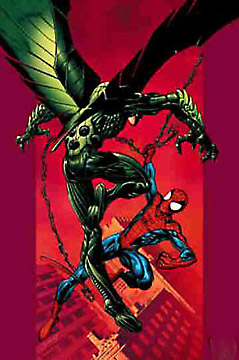 I have found that the Ultimate titles, a more mature and updated retelling of the origins of the Marvel Universe, read better and cohere more understandably when read en masse. Chronology skips a little, a lot goes unsaid, and some characterization seems skimpy. Still, as a whole, they are enjoyable and refreshing. The Spider-Man of this series is still a teenager, still enthusiastic, still naive and impressionable. However, where he was once an independent actor, moving where and how his conscience dictated, here he is a mere drone to Nick Fury, en egomaniacal benevolent dictator who thinks his will is above all law and all control. (As an aside, it would be interesting to have a good legal scholar edit superhero comics for a year or so, and constrain their actions within our legal system. The final outcome of most of these stories would certainly differ from what we now enjoy.) Still, we perforce must accept the world presented to us, and within that cosmos Nick rules supreme. And, he rules Spiderman.
I have found that the Ultimate titles, a more mature and updated retelling of the origins of the Marvel Universe, read better and cohere more understandably when read en masse. Chronology skips a little, a lot goes unsaid, and some characterization seems skimpy. Still, as a whole, they are enjoyable and refreshing. The Spider-Man of this series is still a teenager, still enthusiastic, still naive and impressionable. However, where he was once an independent actor, moving where and how his conscience dictated, here he is a mere drone to Nick Fury, en egomaniacal benevolent dictator who thinks his will is above all law and all control. (As an aside, it would be interesting to have a good legal scholar edit superhero comics for a year or so, and constrain their actions within our legal system. The final outcome of most of these stories would certainly differ from what we now enjoy.) Still, we perforce must accept the world presented to us, and within that cosmos Nick rules supreme. And, he rules Spiderman.
In general I enjoy this series. As I mature I want my comics to mature. These certainly do. They present a more complex moral situation. They make the demarcation of where good ends and bad begins a more subtle transition. The question of whether having the power to act, is the answer to whether one should, is constantly asked. I like the Ultimates and read each and every one.
In issue #90, the fact that Spider-Man is a mere pawn of Nick Fury, becomes ever more clearly delineated to the reader. That Spiderman is an outsider, even to the other hero’s held in thrall by Fury is illustrated. The corruption of power is hinted at. The complexity of the situation is maintained. Still, I find myself somehow not quite satisfied.
The art is consistent with past issues, but not quite to my taste. I quickly acknowledge that beauty is indeed in the eye of the beholder. The work is certainly competent. Craftsmanlike. Professional. I suppose that for what is becoming the flagship series for Marvel, at least for me, I want epic, panoramic, idiosyncratic, personal, distinctive, eyeball bursting art. This is middle of the road. Not bland, not spicy. One could easily argue that it matches the story. I have read it three times now and it has improved from the first reading but it feels like nothing other than a fill in; a necessary step from an important part of the plot to another that is coming later. Where the plot line is going seems a little obvious to me, but in fairness I probably need to wait a few more issues to see if this is a mere transition or a pivot point.
THREE OUT OF FIVE VIKINGS

Black Panther meets Blade in the Big Easy
By Mark Wheaton
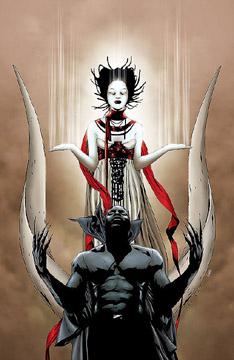 As Black Panther begins its second year, kudos must be given to writer Reginald Hudlin and artist Scot Eaton for resurrecting a marginal Marvel character and turning his eponymous title into a must-read. That said, with the promise of the last panel of issue #12, issue #13 can’t help but be a disappointment as – in one issue – it ties up the entire storyline begun in #12 that teamed T’Challa with Blade, Brother Voodoo and Luke Cage to fight a horde of redneck vampires preying on poor blacks left behind in Katrina-aftermath New Orleans.
As Black Panther begins its second year, kudos must be given to writer Reginald Hudlin and artist Scot Eaton for resurrecting a marginal Marvel character and turning his eponymous title into a must-read. That said, with the promise of the last panel of issue #12, issue #13 can’t help but be a disappointment as – in one issue – it ties up the entire storyline begun in #12 that teamed T’Challa with Blade, Brother Voodoo and Luke Cage to fight a horde of redneck vampires preying on poor blacks left behind in Katrina-aftermath New Orleans.
Yes, this Three the Hard Way + Blade adventure could’ve easily gone for months and probably would have been a storied, action-packed run. It might’ve expanded on the mythos of Blade and Brother Voodoo (a character as underused as the Black Panther) and then brought in Big Easy-native Monica Rambeau (aka Captain Marvel aka Pulsar) whose addition in the second half of issue #13 feels like too many cooks in the kitchen rather than a great way of revamping all these characters (though Rambeau is a part of Warren Ellis’s NextWave) at once. Instead, it’s two, all-too-brief issues (well, Cage appeared earlier, but they’ve only been in Louisiana for two) that promise more than they can deliver.
But enough about what might’ve been.
As issue #13 begins, our four heroes face off against a mad horde of New Orleans vampires, many dating from the plantation days who want nothing more than to bring slavery back in order to create a baby-farm that’s blood would feed their number for years and years. The superheroes swing into action, using all the wood they can find – going so far as to collapse the ruined building they’re in – to stake all the hundreds of vampires. The most fun part, of course, is watching each of the different heroes fight vampires in their own way – the Black Panther getting a new suit and ebony blade (a sword so nifty that Blade deadpanedly asks it to be willed to him when T’Challa dies), Brother Voodoo going to the spirit world and Luke Cage just beating ass.
Once the big monster fight concludes, ending with humorous banter between the stand-offish Blade and the easily-irritated Cage (who gets rankled every time Brother Voodoo disappears into the netherworld and leaves just three to fight), the group effectively splits up – Brother Voodoo and Luke Cage go to smash the coffin of the main vampire only to end up fighting a gargoyle-type demon as Blade goes to kill the main vampire alone. At the same time, the Black Panther goes to find Monica Rambeau, who is aiding her father, as she’s the most powerful of all of them and can destroy every vampire at once.
Though all this is then resolved in just a handful of pages, there’s still fun to be had. The gargoyle “tenderizing” Luke Cage before eating him is funny, Blade learning that – yes – there are superheroes far more powerful than him that can save his ass is neat, but then the ending, with Brother Voodoo, Luke Cage and T’Challa driving off in a cherry-red ’59 El Dorado convertible while they wonder where Blade went off to (as Luke Cage tries to put the moves on T’Challa’s two female bodyguards), is a great capper.
With the “Bride of the Panther” storyline rearing its hopefully-not-as-bad-as-it-sounds head, it is understandable why Marvel chose to finish off this team-up in two issues so that they could move back into the Storm-T’Challa plotline that fed into the House of M stories. That said, should Marvel ever feel compelled to bring these five characters back together for a pure-action adventure, it would be most welcome.
At one point, an old man listening to the Black Panther convince Rambeau to join them says, “Did you hear the rap he just put on her? The Black Panther is a pimp!” Indeed.
THREE AND A HALF OUT OF FIVE VIKINGS

Astonishing X-Men: Bad Girls, Bad Girls—Whatcha gonna do?
By Jeb D.
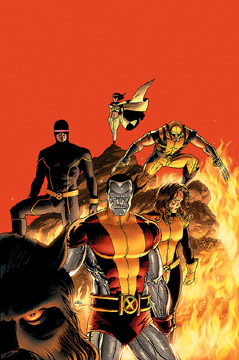 Marvel Comics has developed many of its superheroines from characters first introduced as villains: Medusa, Black Widow, Scarlet Witch, etc. (there’s a great research paper there). And from her earliest days as the White Queen of the perverse Hellfire Club, Emma Frost was one of the most villainous: a powerful psychic with the air (and costume) of a dominatrix, who quickly became the X-Men’s principal female baddie.
Marvel Comics has developed many of its superheroines from characters first introduced as villains: Medusa, Black Widow, Scarlet Witch, etc. (there’s a great research paper there). And from her earliest days as the White Queen of the perverse Hellfire Club, Emma Frost was one of the most villainous: a powerful psychic with the air (and costume) of a dominatrix, who quickly became the X-Men’s principal female baddie.
Sometime while I wasn’t looking (i.e., the 90’s), Marvel moved Emma over to the side of the angels (I half suspect it was an artist who figured he would get to draw her more often if she was an X-Man rather than a villain). She was given the lead of a mutant second-team called Generation X (who even managed to appear in a movie before the X-Men did), and became a fixture in the Marvel Universe.
Grant Morrison then took over the flagship X title… and young Mr. Morrison fell in love with the icy blonde in the hot white leathers. He soon had Emma in Xavier’s inner circle, and while Morrison restored some of Emma’s lost “edge” (literally—she developed a “secondary mutation” that can turn her body to diamond), he completed her motivational downgrade: she went from domination and torture to stealing Jean Grey’s man. By the time he was done, although she was still an entertaining character, Emma seemed not so much evil as, well… grouchy.
When Joss Whedon became Morrison’s de facto successor with Astonishing X-Men, one of the first things he did was to remind us of the potency of Emma’s original characterization. He brought Kitty Pryde back to Xavier’s mansion, and Kitty knew from the first that Emma’s presence there was simply wrong. As she reminded us, their first meeting involved Emma kidnapping Kitty and nearly murdering the X-Men. For the first 11 issues of Astonishing X-Men, the Emma-Kitty feud seemed the sort of bad-tempered bickering often used to add spice to a superhero team. Then, with issue 12, Whedon yanked the rug out from under us: Kitty was right, as we saw Emma receiving psychic communication from a reconstituted Hellfire Club.
Now, Astonishing X-Men returns with issue #13, and it would appear that Kitty was even more right than she knew. This issue centers around a meeting between Emma and a Hellfire Club even deadlier than the one she used to run with: the mass-murdering psychic Cassandra Nova is now one of its members. Whedon makes it clear that Emma has been secretly involved with this new Hellfire Club for quite some time, but it’s equally clear that they have been expecting her to exploit the X-Men from within long before this, and the other members of the group are getting impatient waiting for results.
Is Emma a traitor? Double agent? Is all of what we’re shown actually “real” (remember, we’re talking psychics here)? No easy answers yet. Whedon even gives us a classic “hooded villain” called Perfection, who is evidently the eminence grise behind the group, and I’m sure that “her”(?) identity will make for plenty of guessing down the road.
Elsewhere, we get to see Logan “training” some of the younger mutants who survived the recent “Decimation”, and Whedon is one of the few writers who seems to be able get laughs out of Wolverine without making him into a buffoon. Cyclops and Beast swap emotional issues, and Kitty tackles her feelings about Colossus’ return. The dialog is Whedon-sharp, and if he’s not yet in Grant Morrison’s league as a comic writer, he “gets” these characters better than Morrison often did. The issue reaches a quiet climax with Perfection looking deeper into Emma’s heart than even Cassandra Nova can, with results that don’t appear to be reassuring for our blond bombshell.
The John Cassaday/Laura Martin art team turns in their usual stunning job. The contrast to their work on Planetary is apt: Planetary is a book about, well, the “planet”, and the highly-detailed environment is as much a member of the cast as any of the principals. In contrast, of course, X-Men is a soap opera, and just like Days of Our Lives, the facial closeup is the money shot here. And, while the idea is obviously Whedon’s, Cassaday and Martin make that last full-page panel look insanely creepy.
Whedon has said that the first half of this new run of Astonishing X-Men will focus on character pieces, with the action picking up (and dovetailing with the first series) towards the end. The good news, then, is that he’s ensnaring his characters in an intriguing mystery with roots going all the way back to the glory days of Claremont-Byrne; the bad news, of course, is that we don’t appear to have a lot of “fastball specials” in the immediate future. I’d love to see the two aspects better balanced, but the quality of the book is too high for that to be any serious complaint.
THREE AND A HALF OUT OF FIVE VIKINGS

Ultimate Extinction Continues Big Thrills
By Elgin Carver
 Entire eras of comics can be represented by just a few books and the 1960s Marvels cannot be better understood than in The Fantastic Four issues # 48, 49, and 50. The expansion of power and concepts extrapolated into mind-numbing proportions began here. And Marvel in the 60’s was the exploration of power in never ending growth.
Entire eras of comics can be represented by just a few books and the 1960s Marvels cannot be better understood than in The Fantastic Four issues # 48, 49, and 50. The expansion of power and concepts extrapolated into mind-numbing proportions began here. And Marvel in the 60’s was the exploration of power in never ending growth.
Warren Ellis has taken on the task of updating this iconic visitation, and bravely so. Begun in the Ultimate Nightmare story arc, continued in the Ultimate Secret arc, and presumably ending in the Ultimate Extinction arc, I have read and am waiting with bated breath, to determine if another era can be defined by a retelling of a 40 year old story. Where the original story seemed restricted to the forces directly involved, Galactus, his minions, and the FF, this retelling demonstrates what the effects on us common folk would be. The horrifying destruction is more personally described and illustrated. The realities of such a fantastically powerful and impassive creature come into far better focus. Lee and Kirby took only three issues, but that was during the first era of ongoing stories. No one knew how patient the public would be with only a portion of the story being told on a monthly basis. This is the tenth issue for the story, and the slower development has a chilling effect, with growing anticipation and dread. At first I was a little unsure about the art in this issue but it is distinctive and apropos. It quickly grew on me, although I found the cover to be less impressive than issue #1.
At the end of this issue there is an interview with Ellis and, while not a waste of time, although it turns into an ad for another title, it reveals his thinking and lets us know that Gah Lak Tus will not be Galactus. It also has the unfortunate effect of demonstrating a distinctly condescending attitude toward the original story and those who find it compelling, especially toward those of us old enough to have read the story when it first appeared. I will charitably consider his statements lighthearted, but they were very off-putting. This may demonstrate what seems to be a major hurdle in getting comics to the next step of acceptability. Even the creators look down on the fan base. if they ever realize their customers are every bit as intellectually sound as themselves and start writing for their equals, comics will be elevated in the eyes of the general public to something approaching that found in Japan and, to some extent, Europe. Until then it will be "children’s literature." That Gah Lak Tus will not be an entity as Kirby created is a disappointment, but I’m not ready to throw out the baby with the bath water. Lets see the next issue.
THREE OUT OF FIVE VIKINGS



Kid Eternity TPB
DC Comics
By Mark Wheaton
 With Grant Morrison’s recent Seven Soldiers project, it’s only fitting that DC’s Vertigo label should re-issue one of Morrison’s first forays into re-inventing obscure characters from the DC Universe, this time the incredibly surreal 1991 update of the war-era character, Kid Eternity.
With Grant Morrison’s recent Seven Soldiers project, it’s only fitting that DC’s Vertigo label should re-issue one of Morrison’s first forays into re-inventing obscure characters from the DC Universe, this time the incredibly surreal 1991 update of the war-era character, Kid Eternity.
Kid Eternity first came around in 1942, a sort of wish-fulfillment character shamelessly borrowed from the popular film Here Comes Mr. Jordan (which itself borrowed from several short stories from the UK and elsewhere) that was killed in World War II, but upon reaching Heaven, was informed he’d died seventy-five years too soon. So, the “kid” – as he was known – was sent on a seventy-five year mission to do good on Earth.
His wacky, Golden Age power? By saying the word “eternity,” he could summon any similarly good character from the past or mythology (?) to help him in doing good – all while accompanied by a sort of after-life accountant named Mr. Keeper.
Naturally, Grant Morrison – fresh off his legendary, status quo-up-ending run on Doom Patrol and the real achievement that was Batman: Arkham Asylum – decided to turn Kid Eternity into something that feels at home with Neil Gaiman’s Sandman adventures (and his book, Neverwhere) or in the pages of Hellblazer. Featuring the

 BUY IT AT AMAZON: CLICK HERE!
BUY IT AT AMAZON: CLICK HERE!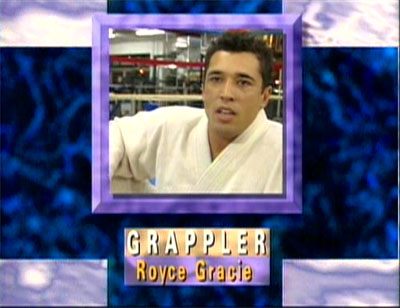
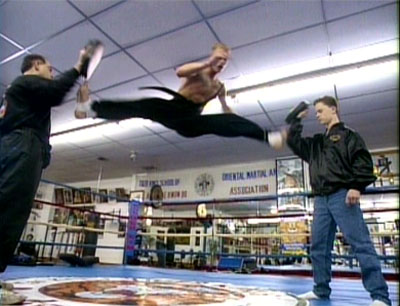


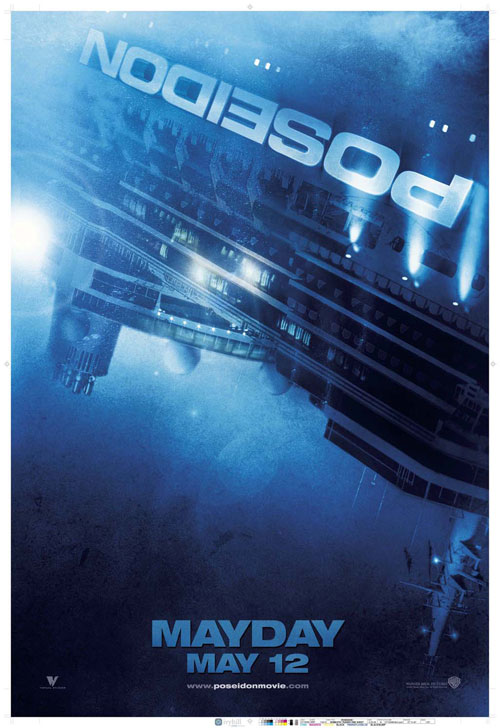


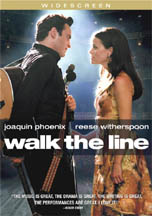
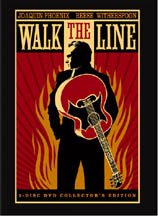

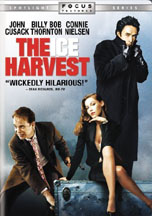
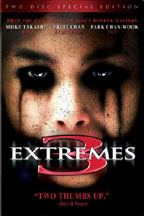
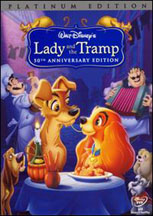

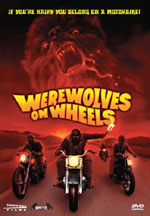

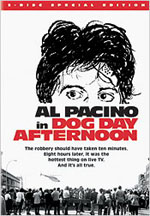
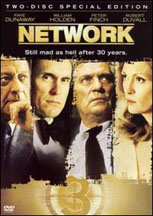

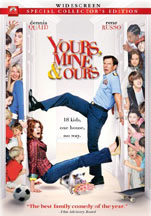
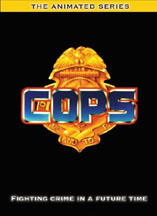
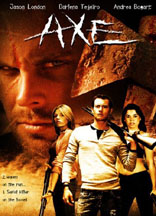
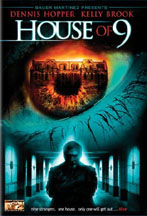


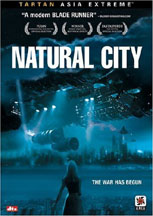
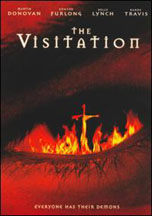
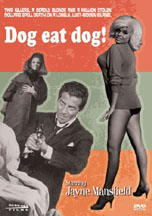
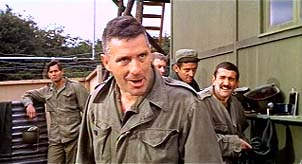
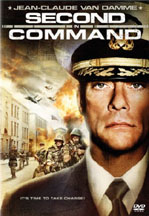

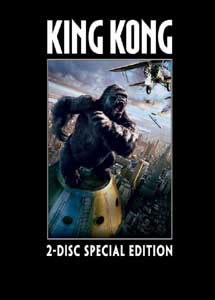

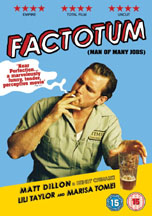

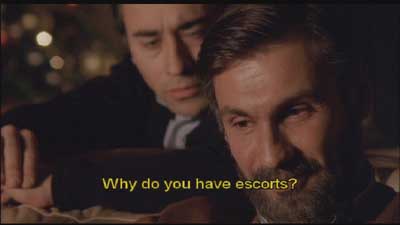
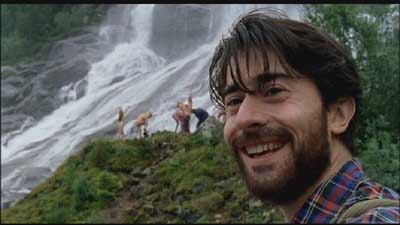
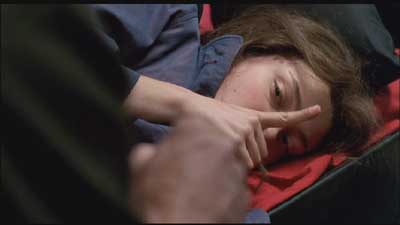
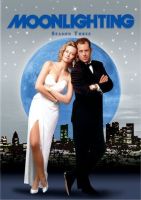

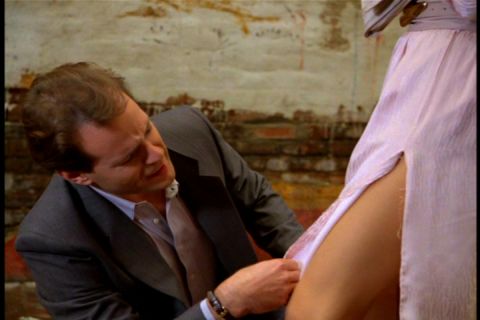

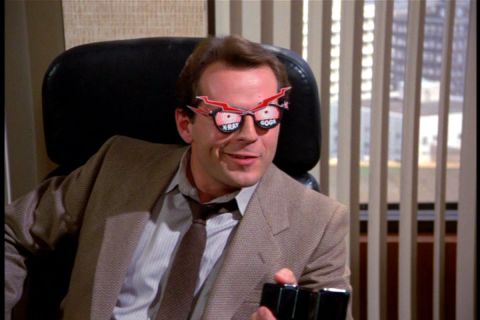
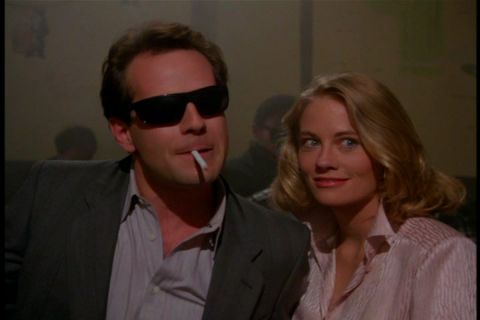
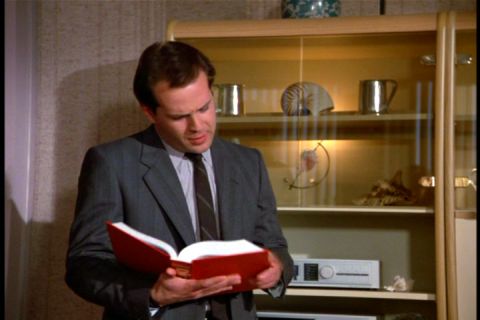
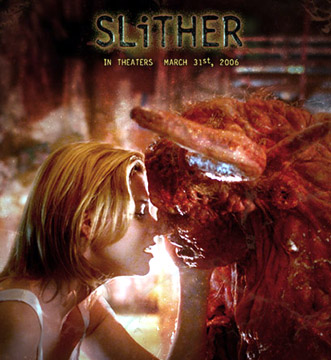 What could be better than spending 90 minutes with ludicrous amounts of horrifying gore and sticky alien slugs (and Elizabeth Banks)? How about helping pimp it and getting 25 large for your efforts?
What could be better than spending 90 minutes with ludicrous amounts of horrifying gore and sticky alien slugs (and Elizabeth Banks)? How about helping pimp it and getting 25 large for your efforts? Mike Grell was a popular guy around the Fahey household during the early eighties.
Mike Grell was a popular guy around the Fahey household during the early eighties.
 I really dig DC’s Solo series, the bi-monthly anthology that thrusts the spotlight on a single creator allowing them to do with their 48 pages (advert-free) as they please.
I really dig DC’s Solo series, the bi-monthly anthology that thrusts the spotlight on a single creator allowing them to do with their 48 pages (advert-free) as they please.
 Everybody likes Brubaker’s Captain
Everybody likes Brubaker’s Captain  There are, unfortunately, a comparatively few number of comics originated by, and completed by one and the same person. I say this because with almost any creative project, the originator understands the intent, the clarity requisite for that undefinable something that grabs you and insists on being enjoyed. What I believe to be the longest running book in this category today is Usagi Yojimbo, a "funny animal" comic set in feudal
There are, unfortunately, a comparatively few number of comics originated by, and completed by one and the same person. I say this because with almost any creative project, the originator understands the intent, the clarity requisite for that undefinable something that grabs you and insists on being enjoyed. What I believe to be the longest running book in this category today is Usagi Yojimbo, a "funny animal" comic set in feudal  For the past 20 years or so, a kind of mania has swept through the corporate suits of comicdom from time to time, and taken hold in some of the worst possible places. The mania manifests when someone, or group of someones, feels that stories are becoming stale, or, and this may be more likely, sales are slumping. This obsession can become a positive thing and the retro look becomes a part of the mythos. The Dark Knight is the example that first springs to mind. Batman was re-energized, and echoes of those four issues can still be heard in most of today’s books. I enjoy the Ultimate titles which are taking a more modern, slightly skewed look at most of Marvel’s main characters. It’s being done in a mature and reasonable way, for what it is. More commonly, this mania interferes with both the previous history of the character and the future possibilities in a negative way, carrying the books off into plot lines that clearly would be better served by creating a new character or, preferably, forgotten altogether. Remember the Death of Superman? The Clone Saga for Spiderman?
For the past 20 years or so, a kind of mania has swept through the corporate suits of comicdom from time to time, and taken hold in some of the worst possible places. The mania manifests when someone, or group of someones, feels that stories are becoming stale, or, and this may be more likely, sales are slumping. This obsession can become a positive thing and the retro look becomes a part of the mythos. The Dark Knight is the example that first springs to mind. Batman was re-energized, and echoes of those four issues can still be heard in most of today’s books. I enjoy the Ultimate titles which are taking a more modern, slightly skewed look at most of Marvel’s main characters. It’s being done in a mature and reasonable way, for what it is. More commonly, this mania interferes with both the previous history of the character and the future possibilities in a negative way, carrying the books off into plot lines that clearly would be better served by creating a new character or, preferably, forgotten altogether. Remember the Death of Superman? The Clone Saga for Spiderman?
 It’s ironic that one of the most “old-school” comics this week comes from a comics newbie: Lost co-creator Damon Lindelof. Working with artist Lenil Francis Yu, Lindelof has taken one of the classic encounters of the original Marvel Universe (Wolverine was first introduced as an enemy for The Hulk), spun it Ultimate, and come up with the kind of comic that reminds us how much entertainment can still be mined from these age-old characters and situations.
It’s ironic that one of the most “old-school” comics this week comes from a comics newbie: Lost co-creator Damon Lindelof. Working with artist Lenil Francis Yu, Lindelof has taken one of the classic encounters of the original Marvel Universe (Wolverine was first introduced as an enemy for The Hulk), spun it Ultimate, and come up with the kind of comic that reminds us how much entertainment can still be mined from these age-old characters and situations. I have found that the Ultimate titles, a more mature and updated retelling of the origins of the Marvel Universe, read better and cohere more understandably when read en masse. Chronology skips a little, a lot goes unsaid, and some characterization seems skimpy. Still, as a whole, they are enjoyable and refreshing. The Spider-Man of this series is still a teenager, still enthusiastic, still naive and impressionable. However, where he was once an independent actor, moving where and how his conscience dictated, here he is a mere drone to Nick Fury, en egomaniacal benevolent dictator who thinks his will is above all law and all control. (As an aside, it would be interesting to have a good legal scholar edit superhero comics for a year or so, and constrain their actions within our legal system. The final outcome of most of these stories would certainly differ from what we now enjoy.) Still, we perforce must accept the world presented to us, and within that cosmos Nick rules supreme. And, he rules Spiderman.
I have found that the Ultimate titles, a more mature and updated retelling of the origins of the Marvel Universe, read better and cohere more understandably when read en masse. Chronology skips a little, a lot goes unsaid, and some characterization seems skimpy. Still, as a whole, they are enjoyable and refreshing. The Spider-Man of this series is still a teenager, still enthusiastic, still naive and impressionable. However, where he was once an independent actor, moving where and how his conscience dictated, here he is a mere drone to Nick Fury, en egomaniacal benevolent dictator who thinks his will is above all law and all control. (As an aside, it would be interesting to have a good legal scholar edit superhero comics for a year or so, and constrain their actions within our legal system. The final outcome of most of these stories would certainly differ from what we now enjoy.) Still, we perforce must accept the world presented to us, and within that cosmos Nick rules supreme. And, he rules Spiderman.
 As Black Panther begins its second year, kudos must be given to writer Reginald Hudlin and artist Scot Eaton for resurrecting a marginal Marvel character and turning his eponymous title into a must-read.
As Black Panther begins its second year, kudos must be given to writer Reginald Hudlin and artist Scot Eaton for resurrecting a marginal Marvel character and turning his eponymous title into a must-read.
 Marvel Comics has developed many of its superheroines from characters first introduced as villains: Medusa, Black Widow, Scarlet Witch, etc. (there’s a great research paper there). And from her earliest days as the White Queen of the perverse Hellfire Club, Emma Frost was one of the most villainous: a powerful psychic with the air (and costume) of a dominatrix, who quickly became the X-Men’s principal female baddie.
Marvel Comics has developed many of its superheroines from characters first introduced as villains: Medusa, Black Widow, Scarlet Witch, etc. (there’s a great research paper there). And from her earliest days as the White Queen of the perverse Hellfire Club, Emma Frost was one of the most villainous: a powerful psychic with the air (and costume) of a dominatrix, who quickly became the X-Men’s principal female baddie. Entire eras of comics can be represented by just a few books and the 1960s Marvels cannot be better understood than in The Fantastic Four issues # 48, 49, and 50. The expansion of power and concepts extrapolated into mind-numbing proportions began here. And Marvel in the 60’s was the exploration of power in never ending growth.
Entire eras of comics can be represented by just a few books and the 1960s Marvels cannot be better understood than in The Fantastic Four issues # 48, 49, and 50. The expansion of power and concepts extrapolated into mind-numbing proportions began here. And Marvel in the 60’s was the exploration of power in never ending growth.
 With Grant Morrison’s recent Seven Soldiers project, it’s only fitting that DC’s Vertigo label should re-issue one of Morrison’s first forays into re-inventing obscure characters from the DC Universe, this time the incredibly surreal 1991 update of the war-era character, Kid Eternity.
With Grant Morrison’s recent Seven Soldiers project, it’s only fitting that DC’s Vertigo label should re-issue one of Morrison’s first forays into re-inventing obscure characters from the DC Universe, this time the incredibly surreal 1991 update of the war-era character, Kid Eternity.
